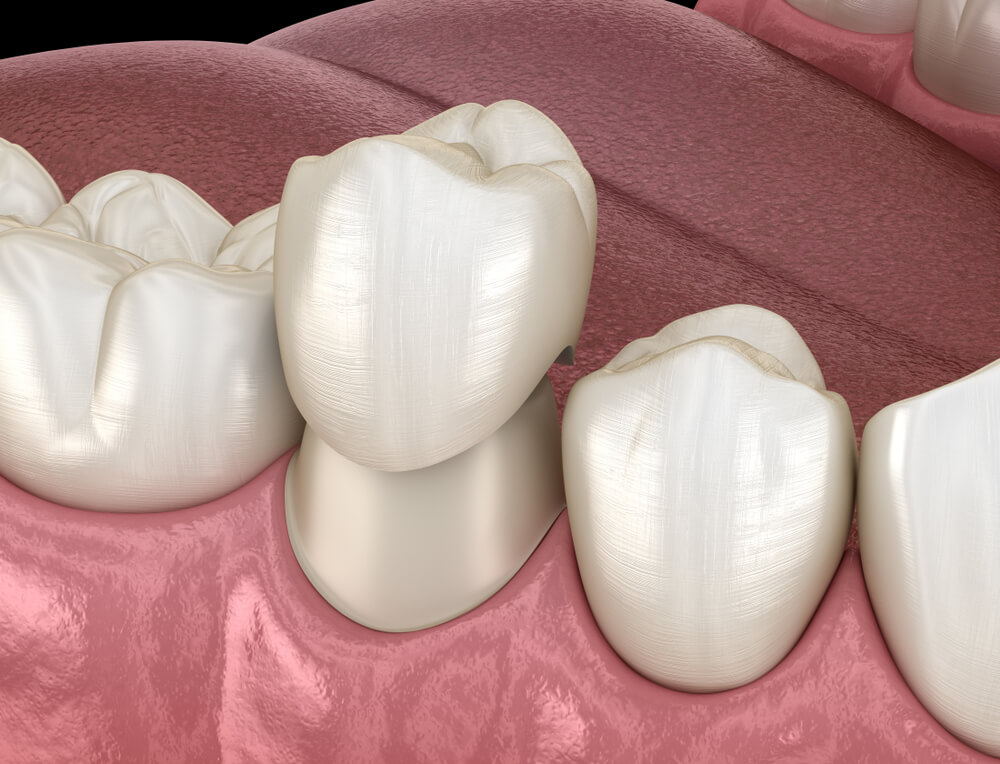There have been many innovations in addressing tooth decay and cavity. Despite this, crowns and bridges have remained a standard of restoration dentistry. Their reliability and effectiveness are time-tested and trusted by dentists and patients alike. These restorations are capable of repairing teeth that have become seriously damaged. Bridges are even capable of replacing teeth that have been lost or extracted. Here at Dentistry Done Right, we’re dedicated to providing patients with beautiful, restored smiles they’ll be proud to share.
Did you know…
that the Etruscan civilization were the first to use crowns as a means of restoring damaged teeth? In fact, the materials they used – ivory, gold, and bones – were still the standard in dentistry as recently as the 20th century, when porcelain crowns were first invented. Today, crowns and bridges are customized specifically for the patient’s bite and can usually be placed in as little as one or two dental visits. With proper cleaning and regular dental check-ups, crowns and bridges can last many years, or even a lifetime.
Discover How Crowns And Bridges Restore Dental Health
When a tooth has experienced significant damage due to trauma or advanced decay, a crown can help. They can restore a beautiful smile, whether the repair is needed due to severe cracking or advanced tooth decay. Crowns and bridges start by removing most of the remaining teeth to build a mounting point for the restoration. Learn more about these restoration options below:
- Crowns: This approach is used when restoration is needed for a single tooth. Crowns are a single cap on a mounting point formed from your natural tooth. This restores function and protects the remaining tooth from infection and decay. Crowns are available in various materials depending on the patient’s needs and desires. These include ceramic, metal, porcelain, or a hybrid of both metal and porcelain. These restorations will rebuild your teeth and restore function and appearance regardless of the material.
- Bridges: Bridges are, in essence, a variation of crowns used to address a tooth or teeth that are missing. In most cases, they’ll involve creating a crown on both sides of the open space where the teeth were. These crowns are then used as anchors for a pontic, a prosthodontic that fills the gap left by the missing teeth. While this is the most common form of dental bridge, there are other styles available that Dr. Rhee may suggest.
- Crowns: This approach is used when restoration is needed for a single tooth. Crowns are a single cap on a mounting point formed from your natural tooth. This restores function and protects the remaining tooth from infection and decay. Crowns are available in various materials depending on the patient’s needs and desires. These include ceramic, metal, porcelain, or a hybrid of both metal and porcelain. These restorations will rebuild your teeth and restore function and appearance regardless of the material.
- Bridges: Bridges are, in essence, a variation of crowns used to address a tooth or teeth that are missing. In most cases, they’ll involve creating a crown on both sides of the open space where the teeth were. These crowns are then used as anchors for a pontic, a prosthodontic that fills the gap left by the missing teeth. While this is the most common form of dental bridge, there are other styles available that Dr. Rhee may suggest.
The preparation for receiving crowns and bridges is quite similar. The first step is the removal of decay and shaping the remaining tooth into a mounting point for the crown. This step will be repeated for all the teeth scheduled to be treated. The next step is taking a dental impression that will be sent to a third-party dental lab to make the crown or bridge. A temporary dental crown will be put in place until it is returned. The final step is returning to the office to have the temporary crown removed and the permanent one fixed in place by Dr. Rhee.
Frequently Asked Questions
Is a crown or bridge right for me?
If you have a tooth that is damaged or decayed, but still intact, a dental crown may be right for you. If your tooth is missing, but its former position is surrounded by other tooth structures, a bridge may be the solution for you. Schedule an office consultation to determine whether you could benefit from crowns or bridges.
What should I expect when I have my crown or bridge placed?
If you are a candidate for a crown or bridge, your teeth will be reduced to ensure a proper fit. An impression will then be taken of your bite and used to fabricate a mold for the crown or bridge. If you are choosing porcelain prosthesis, its color will be matched to the natural shade of your other teeth. If a dental lab is making your crown or bridge, you may be fitted with a temporary restoration until the permanent one is ready for placement.
Do I need to follow any post-treatment care guidelines?
Your teeth will need time to heal following the crown and bridge placement process, so it is normal for you to experience some sensitivity – especially to hot and cold. Additionally, you may experience soreness in the gums surrounding your restorations, though this is usually manageable with ibuprofen and should subside within a few days.
Contact Dentistry Done Right For Bridge and Crown Restorations
If you have a tooth that’s had to be extracted, call us about our restoration options. We’ll have you in for a consultation with Dr. Rhee, during which your oral health will be assessed. Together you’ll discuss your aesthetic and oral health concerns and develop a treatment plan to best accomplish your goals. Damaged and decayed teeth don’t have to be a permanent mar on your smile. Contact Dr. Rhee at Dentistry Done Right to restore your beautiful smile!

